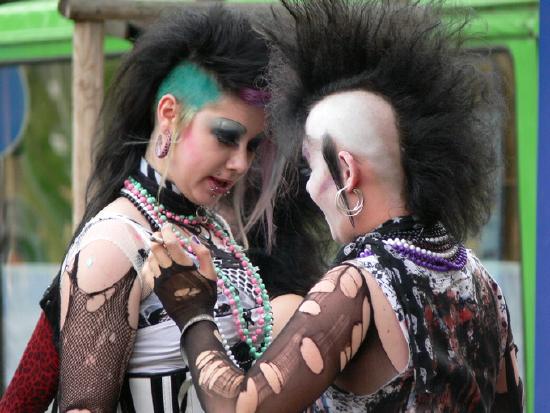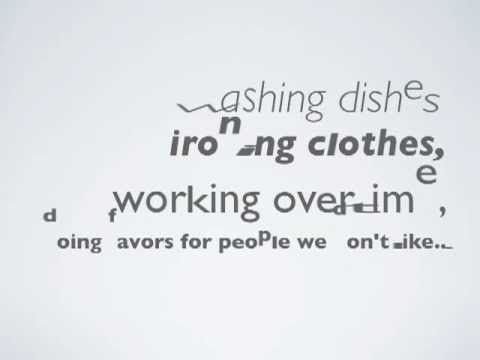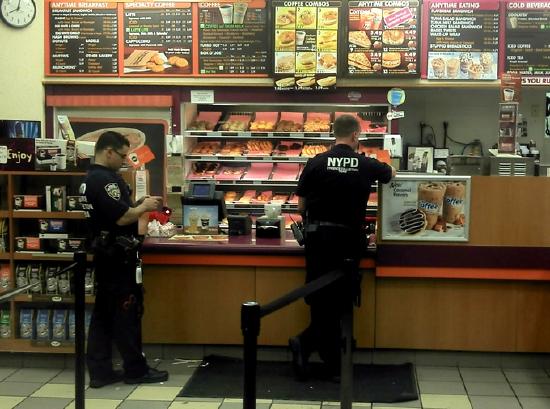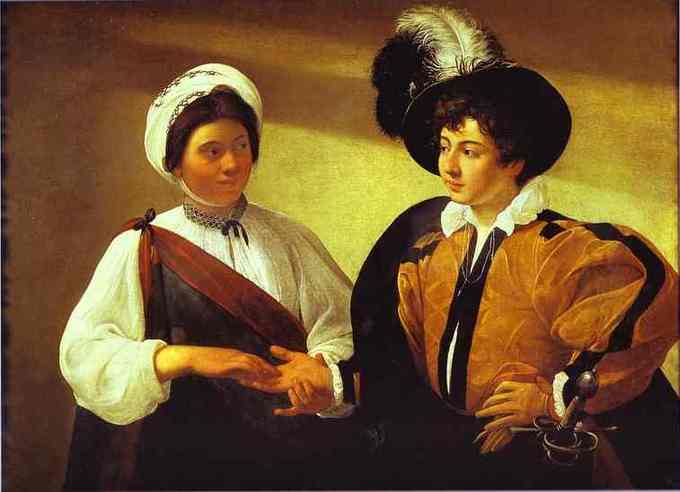5.2: Types of Social Interaction
- Last updated
- Save as PDF
- Page ID
- 57050

- Boundless
- Boundless
Nonverbal Communication
Nonverbal communication is the process of communicating by sending and receiving wordless messages.
Learning Objectives
Analyze the various ways people use non-verbal communication to send messages to others in society, such as speech, posture, gestures, clothing and consequences
Key Points
- Nonverbal communication can be conveyed through our dress and style.
- Nonverbal communication also occurs through the non-content parts of speech, such as voice quality, pace, pitch, volume, rhythm, and intonation.
- Gestures and posture vary by cultural context.
Key Terms
- Emblem Gestures: They vary by cultural space so widely that a common gesture in one context is offensive in another.
- posture: The way a person holds and positions their body.
- paralanguage: The non-verbal elements of speech, and to a limited extent of writing, used to modify meaning and convey emotion, such as pitch, volume, and intonation.
Nonverbal communication is the process of communicating by sending and receiving wordless messages. This type of communication includes gestures, touch, body language, posture, facial expressions, and eye contact. Nonverbal communication can also include messages communicated through material items. For example, clothing or hairstyle is a form of nonverbal exchange that communicates something about the individual. As a general rule, nonverbal communication can be studied based on the location or context of communication, the physical characteristics of the interlocutors, and the behaviors of the interlocutors in the course of the interaction.
Speech
Ironically, nonverbal communication can also be found in speech. This type of nonverbal communication is called paralanguage and includes vocal elements, such as voice quality, pace, pitch, volume, rhythm, and intonation. Differences in paralanguage can impact the message that is communicated through words. For example, if someone smiles while saying “Get out of town,” that person likely is communicating that she doubts something you’re saying or finds it unbelievable. Alternatively, if someone comes running at you and screams “Get out of town! ” with a furious expression, it might be a literal threat. Paralanguage is a good example of nonverbal communication that is not visual.
Posture
Posture, or a person’s bodily stance, communicates much about a person’s perspectives. Various postures include slouching, towering, shoulders forward, and arm crossing. These nonverbal behaviors can indicate a person’s feelings and attitudes. Posture can be used to determine an individual’s degree of intention or involvement, the difference in status between interlocutors, and the level of fondness a person has for the other communicator, depending on body “openness.”
Studies investigating the impact of posture on interpersonal relationships suggest that mirror-image congruent postures, where one person’s left side is parallel to the other person’s right side, lead communicators to think favorably about their exchange. Posture is socialized and geographical, meaning that an individual learns different ways to carry themselves in different contexts. A housewife from Kansas City will compose herself differently than a dock worker from Portland, who will compose himself differently than a teenager in Seattle. Generational differences demonstrate how posture is socialized; older generations were taught to carry themselves with their shoulders farther back, prompting parents to remind today’s youth to stop slouching.
Gestures
Gestures are movements with one’s hands, arms, or face that communicate a particular message. The most common gestures are emblem gestures or quotable gestures that are learned within a particular cultural to communicate a particular message. For example, in the Western world, waving one’s hand back and forth communicates “hello” or “goodbye. ” Emblem gestures can vary by cultural space so widely that a common gesture in one context is offensive in another. Facial gestures, or facial expressions, are a particularly communicative form of gesture. With all of the various muscles that precisely control the mouth, lips, eyes, nose, forehead, and jaw, human faces can make more than ten thousand different expressions. Facial expressions are more difficult for the “speaker” to manipulate, given that so many micro-movements are involved in the creation of one expression. This makes facial gestures extremely efficient and honest, and are therefore heavily relied upon in by the “listener” in evaluating the “speaker’s” assertions.
Clothing
Clothing is a means of communicating nonverbally that relies upon materials other than one’s body. Further, it is a form of nonverbal communication that everyone engages in unless living on a nudist colony. The types of clothing an individual wears convey nonverbal clues about his or her personality, background, and financial status. Even if an individual does not put much thought into his attire, what he wears still communicates something to others, even unintentionally. An example of how people are aware that their clothing serves to communicate is the notion of proper dress. You would dress differently to go to a wedding than a job interview than camping.

Consequences
Nonverbal communication can have serious consequences, even if the public understands the message they are receiving is being conveyed unintentionally. For example, individuals tend to trust and support taller people. Obviously, an individual has no control over his height but, nevertheless, others perceive height to communicate certain character traits. In American elections, the taller candidate usually wins. In the 2004 presidential debates, George W. Bush (the shorter candidate) insisted that his podium be altered so that he appeared to be the same height as John Kerry. The point is that everything about ourselves, whether under our control or not, communicates information to an audience.

Exchange
Social exchange theory argues that people form relationships because they determine that it is in their best interests to do so.
Learning Objectives
Explain how social exchange theory is based upon rational choice theory
Key Points
- In forming relationships, people exchange goods and services (including emotional support and interaction). People stay in relationships when they believe that the exchange is beneficial.
- Social exchange theory is rooted in rational choice theory.
- Individuals evaluate the worth of an action by subtracting the costs from the rewards.
Key Terms
- rewards: A gift given for positive reinforcement.
- Social Exchange Theory: It advances the idea that relationships are essential for life in society and that it is in one’s interest to form relationships with others. Of course, whether or not it is in an individual’s interest to form a relationship with a specific person is a calculus that both parties must perform.
- worth: It is having a value of; proper to be exchanged for.
Social exchange theory is a sociopsychological and sociological perspective that explains social change and stability as a process of negotiated exchanges between parties. The theory is fundamentally oriented around rational choice theory, or the idea that all human behavior is guided by an individual’s interpretation of what is in his best interest. Social exchange theory advances the idea that relationships are essential for life in society and that it is in one’s interest to form relationships with others. Of course, whether or not it is in an individual’s interest to form a relationship with a specific person is a calculation that both parties must perform. Nevertheless, social exchange theory argues that forming relationships is advantageous because of exchange. Each party to the relationship exchanges particular goods and perspectives, creating a richer life for both. Notably, while social exchange theory may reference the literal exchange of goods, it can also mean the exchange of more intangible elements. For example, it is in the interests of a dairy farmer and a vegetable farmer to form a relationship because they can exchange their material goods. The theory also applies to Jack and Jill who decide to get married for the emotional support they exchange with one another.
Social exchange theory is only comprehensible through the lens of rational choice theory. Rational choice theory supposes that every individual evaluates his/her behavior by that behavior’s worth, which is a function of rewards minus costs. Rewards are the elements of relational life that have positive value for a person, while costs are the elements of relational life that have negative value for a person. Social exchange theory posits that individuals perform the calculus of worth when decided to form or maintain a relationship with another person. A good example of this would be proverbial “pro/con” list someone might make when deciding to stay or break up with her significant other.
Several assumptions undergird social exchange theory. The first is that humans seek rewards and avoid punishments. Second, humans are rational actors. Finally, social exchange theory acknowledges that the standards by which humans evaluate costs and rewards vary over time and from person to person. This means that what might seem rational to one person would seem completely irrational to another. However, so long as the individual’s decision-making regarding the formation of social relationships involves an evaluation of worth, regardless of what that means to the person, the behavior fits the frame established by social exchange theory.

A link to the YouTube element can be found in Contributors & Attributions section. Social Exchange Theory: This clip outlines the tenets of social exchange theory.
Cooperation
Cooperation is the process of two or more people working or acting in concert.
Learning Objectives
Compare the three types of cooperation (coerced, voluntary and unintentional) and why cooperation is necessary for social reality
Key Points
- Cooperation can be coerced, voluntary, or unintentional.
- Communication is necessary for cooperation.
- Cooperation derives from an overlap in desires and is more likely if there is a relationship between the parties.
Key Terms
- Unintentional Cooperation: It is a form of cooperation in which individuals do not necessarily intend to cooperate, but end up doing so because of aligning interests.
- Voluntary Cooperation: It is cooperation to which all parties consent.
- Coerced Cooperation: It is when cooperation between individuals is forced.
Cooperation is the process of two or more people working or acting together. Cooperation enables social reality by laying the groundwork for social institutions, organizations, and the entire social system. Without cooperation, no institution beyond the individual would develop; any group behavior is an example of cooperation. Cooperation derives from an overlap in desires and is more likely if there is a relationship between the parties. This means that if two people know that they are going to encounter one another in the future or if they have memories of past cooperation, they are more likely to cooperate in the present.
There are three main types of cooperation: coerced, voluntary, and unintentional. Coerced cooperation is when cooperation between individuals is forced. An example of coerced cooperation is the draft. Individuals are forced to enlist in the military and cooperate with one another and the government, regardless of whether they wish to. Voluntary cooperation is cooperation to which all parties consent. An example of voluntary cooperation would be individuals opting to complete a group project for school when given the option of a group project or an individual project. Unintentional cooperation is a form of cooperation in which individuals do not necessarily intend to cooperate but end up doing so because of aligning interests. The free hand of a capitalist economy is an example of unintentional cooperation, where individuals will take actions based on their own interests resulting sometimes in unintentional cooperation.
Communication plays an essential role in cooperation. Communication enables simple acts of cooperation by facilitating parties’ recognition that they have mutual interests and large acts of cooperation by organizing the masses. Without communication, individuals would not be able to organize themselves to cooperate.

Conflict
Social conflict is the struggle for agency or power within a society to gain control of scarce resources.
Learning Objectives
Discuss how various groups in society compete for resources, status and power within society, known as conflict theory
Key Points
- Conflict theory argues that conflict is a normal and necessary part of social interaction. In other words, conflict is seen as part of the social landscape rather than an anomaly.
- According to the theory, conflict is motivated by pursuit of personal interests. All individuals and groups are interested in gaining control over scarce resources, and this leads to conflict.
- Once one party gets control of resources, that party is unlikely to release them. The Matthew Effect is the idea that those in control will remain in control.
Key Terms
- Matthew Effect: The idea that those who have control will maintain control.
- Zero Sum Game: The idea that if group A acquires any given resource, group B will be unable to acquire it.
- Social Conflict: The struggle for agency or power within a society.
Social conflict is the struggle for agency or power within a society. It occurs when two or more people oppose one another in social interactions, reciprocally exerting social power in an effort to attain scarce or incompatible goals, and prevent the opponent from attaining them.
Conflict theory emphasizes interests deployed in conflict, rather than the norms and values. This perspective argues that the pursuit of interests is what motivates conflict. Resources are scarce and individuals naturally fight to gain control of them. Thus, the theory sees conflict as a normal part of social life, rather than an abnormal occurrence. The three tenets of conflict theory are as follows:
- Society is composed of different groups that compete for resources.
- While societies may portray a sense of cooperation, a continual power struggle exists between social groups as they pursue their own interests.
- Social groups will use resources to their own advantage in the pursuit of their goals, frequently leading powerful groups to take advantage of less powerful groups.
Conflict theory relies upon the notion of a zero sum game, meaning that if group A acquires any given resource, group B will be unable to acquire it. Thus, any gain for group A is automatically a loss for group B. Conflict theory further argues that group A will continue to search for resources in order to keep group B from getting them, leading to the exploitation of the powerless. The idea that those who have control will maintain control is called the Matthew Effect.
According to the principles of conflict theory, all cooperation is only for the purpose of acquiring individual or group resources. This motivation for behavior restructures day-to-day interactions among people in a given society.

Competition
Competition is a contest between people or groups of people for control over resources.
Learning Objectives
Explain how competition can be both a help and a hinderance for people in any particular society or group
Key Points
- People can compete over tangible resources, such as land, food, and mates, but also over intangible resources, such as social capital.
- Many evolutionary biologists view inter-species and intra-species competition as the driving force of adaptation and, ultimately, of evolution.
- Many philosophers and psychologists have identified a trait in most living organisms that can drive the particular organism to compete.
Key Terms
- evolution: gradual directional change, especially one leading to a more advanced or complex form; growth; development
- innate: Inborn; native; natural; as, innate vigor; innate eloquence.
Competition is a contest between people or groups of people for control over resources. In this definition, resources can have both literal and symbolic meaning. People can compete over tangible resources like land, food, and mates, but also over intangible resources, such as social capital. Competition is the opposite of cooperation and arises whenever two parties strive for a goal that cannot be shared.
Competition can have both beneficial and detrimental effects. Positively, competition may serve as a form of recreation or a challenge provided that it is non-hostile. On the negative side, competition can cause injury and loss to the organisms involved, and drain valuable resources and energy. Many evolutionary biologists view inter-species and intra-species competition as the driving force of adaptation, and, ultimately, of evolution. However, some biologists, most famously Richard Dawkins, prefer to think of evolution in terms of competition between single genes, which have the welfare of the organism “in mind” only insofar as that welfare furthers their own selfish drives for replication. Some Social Darwinists claim that competition also serves as a mechanism for determining the best-suited group–politically, economically, and ecologically.
Many philosophers and psychologists have identified a trait in most living organisms that can drive the particular organism to compete. This trait, unsurprisingly called “competitiveness,” is viewed as an innate biological trait that coexists along with the urge for survival. Competitiveness, or the inclination to compete, has become synonymous with aggressiveness and ambition in the English language. Just as advanced civilizations integrate aggressiveness and competitiveness into their interactions, as a way to distribute resources and adapt, most plants compete for higher spots on trees to receive more sunlight. However, Stephen Jay Gould and others have argued that as one ascends the evolutionary hierarchy, competitiveness (the survival instinct) becomes less innate and more a learned behavior.
The term also applies to econometrics. Here, it is a comparative measure of the ability and performance of a firm or sub-sector to sell and produce/supply goods and/or services in a given market. The two academic bodies of thought on the assessment of competitiveness are the Structure Conduct Performance Paradigm and the more contemporary New Empirical Industrial Organisation model. Predicting changes in the competitiveness of business sectors is becoming an integral and explicit step in public policymaking. Within capitalist economic systems, the drive of enterprises is to maintain and improve their own competitiveness.

Stereotypes in Everyday Life
A stereotype is a belief about a group of individuals that people apply to any given individual deemed to be part of that group.
Learning Objectives
Evaluate the pros and cons of using stereotypes in society, such as understanding an individual based on common characteristics (pro) to racism (con)
Key Points
- Stereotypes are a heuristic, or tool, to help humans process an overwhelming amount of information as we try to learn about the world around us.
- Stereotypes enable the development of ingroups and outgroups, which can lead to the poor treatment of outgroups. If someone is perceived to be different from you, you might have an easier time treating them poorly. Stereotypes distinguish people.
- The universal application of a stereotype to every perceived member of a group is prejudicial.
Key Terms
- outgroup: It is a social group to which an individual does not identify.
- ingroup: It is a social group to which a person psychologically identifies themselves as a member
- heuristic: An experience-based technique for problem solving, learning, and discovery. Examples include using a rule of thumb or making an educated guess.
A stereotype is a belief about a group of individuals that people apply to any given individual whom is deemed to be part of that group. Stereotypes are usually inaccurate in their universal application. This means that although some individuals within a given group may fit a stereotype, others most certainly will not. The error in stereotyping is the application of a preconception to everyone who is perceived to belong to a particular group.
Stereotypes as Heuristics
Stereotypes are useful for the human brain because they operate as a heuristic or a cognitive mechanism to quickly gather, process, and synthesize information. As social animals, we seek to gather information about those around us. However, there is too much information to process in its entirety. Therefore, we have heuristics to make the process more efficient. In applying a stereotype, one is able to quickly “know” something about an individual. For example, if the only thing you know about Katherine is that she belongs to a band, you are able to guess that she likes music. People use stereotypes as shortcuts to make sense of their social contexts; this makes the task of understanding one’s world less cognitively demanding.
Us Verus Them
By dividing the world into discrete categories by stereotyping, one is able to foster an us versus them mentality. This view separates the social world into different categories and distinguishes others from oneself. In other words, the creation of an us versus them mentality divides the world into an ingroup and an outgroup. An ingroup is the group with which one identifies; an outgroup is everyone else. In line with the reasoning that describes heuristics, distinguishing oneself from others is a cognitively necessary step; it allows us to develop a sense of identity. However, an us versus them mentality fostered by stereotyping can be used to justify horrible treatment of an outgroup. Once one feels as though someone else belongs to an outgroup, one has less difficulty treating that individual inhumanely. A classic example of an us versus them mentality is the Holocaust. The Nazis configured the Jews, a stereotyped class, to be inhuman, allowing the Nazis to treat people they placed in that class inhumanely.
Stereotypes and Prejudice
Given the social and cognitive necessities of heuristics, the problem with stereotyping is not the existence of the cognitive function. The problem lies in the assumption that all people of a group—a group with which they might not even identify—are the same. For example, it is a common stereotype that people who wear glasses are smart. Certainly, there are some glasses-wearing, intelligent people. But it is poor logic to think that everyone who sports glasses is intelligent. Stereotyping can lead to prejudice, or negative perceived judgements about a group of people. The application of prejudice to a given individual can cause personal and social damage.

Personal Space
Personal space is the region surrounding people that they regard as psychologically their own.
Learning Objectives
Explain how the use of personal space can convey social relationships between people in various cultures
Key Points
- In general, the more intimate the relationship, the closer one is able to go into another’s personal space. Negotiating these boundaries reflects on social proximity.
- Sociologists study personal space precisely because of social implications of distance in regard to relationships.
- Senses of personal space are culturally defined. Those who live in urban areas tend to require less personal space, for example. People in Western culture have different notions of personal space than people elsewhere.
Key Terms
- personal space: The physical space closely surrounding a person, which, if encroached upon, can lead to discomfort, anger or anxiety.
Personal space is the region surrounding people that they regard as psychologically theirs. Most people value their personal space and feel discomfort, anger, or anxiety when that space is encroached. Permitting a person to enter personal space and entering somebody else’s personal space are indicators of how the two people view their relationship. There is an intimate zone that is reserved for lovers, children, and close family members. There is another intermediary zone that is used for conversations with friends, to chat with associates, and in group discussions. There is a further zone that is used by strangers and acquaintances, and finally, a zone that is used for public speeches, lectures, and performances.
The size of one’s sense of personal space is culturally determined, in addition to being dependent upon the nuanced relationship of the two interlocutors. Averaged estimates place one’s sense of personal space at two feet on either side, 28 inches in front, and 16 inches behind for an average Westerner. Those living in densely populated places tend to have a smaller sense of personal space. Moreover, individual sense of space has changed historically as the notions of boundaries between public and private spaces have evolved over time.
Senses of personal space are intimately tied to the relationship between the two individuals involved. Entering someone’s personal space is normally seen as an indication of familiarity. However, in modern society, particularly in crowded urban communities, it is sometimes difficult to maintain personal space; for example, in a crowded train. Many people find such physical proximity to be psychologically uncomfortable, but it is accepted as a fact of modern life. Sociologists study personal space precisely because of social implications of distance in regard to relationships.
Eye Contact
Eye contact develops in a cultural context and different gazes have different meanings all over the world.
Learning Objectives
Discuss the various ways people use eye contact as a means of social and emotional expression
Key Points
- Eye contact is an incredibly expressive form of nonverbal communication.
- Eye contact aligns with the relationship underlying the gaze. People who are close with one another look at each others eyes; avoiding eye contact can put distance between two individuals.
- The customs and significance of eye contact vary widely between cultures, with religious and social differences often altering its meaning greatly. For example, Japanese children are taught to direct their gaze at the region of their teacher’s Adam’s apple or tie knot.
Key Terms
- eye contact: The condition or action of looking at another human or animal in the eye.
- oculesics: The study of eye contact as a form of body language.
Eye contact is the meeting of the eyes between two individuals. In humans, eye contact is a form of nonverbal communication and has a large influence on social behavior. The study of eye contact is sometimes known as oculesics.
Eye contact provides a way in which one can study social interactions, as it provides indications of social and emotional information. People, perhaps without consciously doing so, probe each other’s eyes and faces for signs of positive or negative mood. In some contexts, the meeting of eyes arouses strong emotions. Eye contact can establish a sense of intimacy between two individuals, such as the gazes of lovers or the eye contact involved in flirting. Alternatively, avoiding eye contact can establish distance between people. When in crowds, people tend to avoid eye contact in order to maintain privacy.
The customs and significance of eye contact vary widely between cultures, with religious and social differences often altering its meaning greatly. According to the tenets of the Islamic faith, Muslims ought to lower their gazes and try not to focus on the features of the opposite sex, except for the hands and face. Japanese children are taught to direct their gaze at the region of their teacher’s Adam’s apple or tie knot. As adults, Japanese tend to lower their eyes when speaking to a superior as a gesture of respect. In Eastern Africa, it is respectful not to look the dominant person in the eye, whereas such avoidance of eye contact is negatively interpreted in Western cultures. As with all forms of social interaction that impart social significance, eye contact is culturally determined.

Applied Body Language
Body language is a crucial part of social interaction.
Learning Objectives
Discuss the importance of body language as a means of social communication and give specific examples of body language
Key Points
- Research has suggested that between 60 and 70 percent of all meaning is derived from nonverbal behavior.
- One basic body- language signal is when a person crosses his or her arms. When the overall situation is amicable, it can mean that a person is thinking deeply about what is being discussed, but in a serious or confrontational situation, it can mean that a person is expressing opposition.
- Flirting is an example of applied body language. Sexual or romantic interest is primarily communicated through body language, which may include flicking one’s hair, eye contact, brief touching, open stances, and close proximity between partners.
Key Terms
- Flirting: It is a playful activity involving verbal communication and also body language to indicate an interest in a deeper romantic or sexual relationship.
- body language: Nonverbal communication by means of facial expressions, eye behavior, gestures, posture, and the like; often thought to be involuntary.
Body language is a form of human non-verbal communication, which consists of body posture, gestures, facial expressions, and eye movements. Humans send and interpret such signals almost entirely subconsciously. It is impossible for social scientists to study body language in any manner that is not applied. Indeed, social scientists are interested in body language precisely because of what it conveys about social interactions and the relationship between nonverbal interlocutors. This dynamic can only be studied in applied contexts.
Research has suggested that between 60 and 70 percent of all meaning is derived from nonverbal behavior, making body language a crucial part of social interaction. Body language may provide clues as to the attitude or state of mind of a person. For example, it may indicate aggression, attentiveness, boredom, relaxed state, pleasure, amusement, and intoxication, among many other clues.
One of the most basic and powerful body language signals is when a person crosses his or her arms across the chest. This can indicate that a person is putting up an unconscious barrier between themselves and others. However, it can also indicate that the person’s arms are cold, which would be clarified by rubbing the arms or huddling. When the overall situation is amicable, it can mean that a person is thinking deeply about what is being discussed, but in a serious or confrontational situation, it can mean that a person is expressing opposition. This is especially so if the person is leaning away from the speaker. A harsh or blank facial expression often indicates outright hostility.

Another obvious example of expressive body language used in everyday life is flirting. Flirting is a playful activity involving verbal communication and also body language to indicate an interest in a deeper romantic or sexual relationship. Flirting usually involves speaking and behaving in a way that suggests a mildly greater level of intimacy than the actual relationship between parties would justify, though within the rules of social etiquette, which generally frown upon a direct expression of sexual interest. Body language may include flicking one’s hair, eye contact, brief touching, open stances, and close proximity between partners. Thus, by watching two individuals, one can tell if they are flirting.

Contributors and Attributions
- Curation and Revision. by: Boundless.com. CC BY-SA
CC licensed content, Specific attribution
- Nonverbal communication. (CC BY-SA; Wikipedia via en.Wikipedia.org/wiki/Nonverbal_communication)
- Boundless. (CC BY-SA; Boundless Learning via www.boundless.com//sociology/definition/emblem-gestures)
- paralanguage. (CC BY-SA; Wiktionary via en.wiktionary.org/wiki/paralanguage)
- posture. (CC BY-SA; Wiktionary via en.wiktionary.org/wiki/posture)
- Wedding Chilston Park Hotel | Flickr - Photo Sharing!. (CC BY; Flickr via http://www.flickr.com/photos/68720085@N08/6244502737/)
- (CC BY; Wikimedia via Wikimedia)
- Social exchange theory. (CC BY-SA; Wikipedia via en.Wikipedia.org/wiki/Social_exchange_theory)
- worth. (CC BY-SA; Wiktionary via en.wiktionary.org/wiki/worth)
- Boundless. (CC BY-SA; Boundless Learning via www.boundless.com//sociology/definition/social-exchange-theory)
- Boundless. (CC BY-SA; Boundless Learning via www.boundless.com//sociology/definition/rewards)
- Wedding Chilston Park Hotel | Flickr - Photo Sharing!. (CC BY; Flickr via http://www.flickr.com/photos/68720085@N08/6244502737/)
- (CC BY; Wikimedia via Wikimedia)
- Social Exchange Theory. at: http://www.youtube.com/watch?v=uZDmb9FaNy0. Public Domain. License Terms: Standard YouTube license
- Cooperation. (CC BY-SA; Wikipedia via en.Wikipedia.org/wiki/Cooperation)
- Boundless. (CC BY-SA; Boundless Learning via www.boundless.com//sociology/definition/coerced-cooperation)
- Boundless. (CC BY-SA; Boundless Learning via www.boundless.com//sociology/definition/unintentional-cooperation)
- Boundless. (CC BY-SA; Boundless Learning via www.boundless.com//sociology/definition/voluntary-cooperation)
- Wedding Chilston Park Hotel | Flickr - Photo Sharing!. (CC BY; Flickr via http://www.flickr.com/photos/68720085@N08/6244502737/)
- (CC BY; Wikimedia via Wikimedia)
- Social Exchange Theory. at: http://www.youtube.com/watch?v=uZDmb9FaNy0. Public Domain. License Terms: Standard YouTube license
- US Capitol | Flickr - Photo Sharing!. (CC BY; Flickr via http://www.flickr.com/photos/kereifsnyder/2723240330/)
- Social conflict. (CC BY-SA; Wikipedia via http://en.Wikipedia.org/wiki/Social_conflict)
- Boundless. (CC BY-SA; Boundless Learning via www.boundless.com//sociology/definition/matthew-effect)
- Boundless. (CC BY-SA; Boundless Learning via www.boundless.com//sociology/definition/zero-sum-game)
- Boundless. (CC BY-SA; Boundless Learning via www.boundless.com//sociology/definition/social-conflict)
- Wedding Chilston Park Hotel | Flickr - Photo Sharing!. (CC BY; Flickr via http://www.flickr.com/photos/68720085@N08/6244502737/)
- (CC BY; Wikimedia via Wikimedia)
- Social Exchange Theory. at: http://www.youtube.com/watch?v=uZDmb9FaNy0. Public Domain. License Terms: Standard YouTube license
- US Capitol | Flickr - Photo Sharing!. (CC BY; Flickr via http://www.flickr.com/photos/kereifsnyder/2723240330/)
- War and Peace 2008 | Flickr - Photo Sharing!. (CC BY; Flickr via http://www.flickr.com/photos/gluemoon/2685884789/)
- Competition. (CC BY-SA; Wikipedia via en.Wikipedia.org/wiki/Competition)
- evolution. (CC BY-SA; Wiktionary via en.wiktionary.org/wiki/evolution)
- innate. (CC BY-SA; Wiktionary via en.wiktionary.org/wiki/innate)
- Wedding Chilston Park Hotel | Flickr - Photo Sharing!. (CC BY; Flickr via http://www.flickr.com/photos/68720085@N08/6244502737/)
- (CC BY; Wikimedia via Wikimedia)
- Social Exchange Theory. at: http://www.youtube.com/watch?v=uZDmb9FaNy0. Public Domain. License Terms: Standard YouTube license
- US Capitol | Flickr - Photo Sharing!. (CC BY; Flickr via http://www.flickr.com/photos/kereifsnyder/2723240330/)
- War and Peace 2008 | Flickr - Photo Sharing!. (CC BY; Flickr via http://www.flickr.com/photos/gluemoon/2685884789/)
- Basketball | Flickr - Photo Sharing!. (CC BY-SA; Flickr via www.flickr.com/photos/silveiraneto/6905462693/)
- Stereotype. (CC BY-SA; Wikipedia via en.Wikipedia.org/wiki/Stereotype)
- heuristic. (CC BY-SA; Wikipedia via en.Wikipedia.org/wiki/heuristic)
- outgroup. (CC BY-SA; Wiktionary via en.wiktionary.org/wiki/outgroup)
- ingroup. (CC BY-SA; Wiktionary via en.wiktionary.org/wiki/ingroup)
- Wedding Chilston Park Hotel | Flickr - Photo Sharing!. (CC BY; Flickr via http://www.flickr.com/photos/68720085@N08/6244502737/)
- (CC BY; Wikimedia via Wikimedia)
- Social Exchange Theory. at: http://www.youtube.com/watch?v=uZDmb9FaNy0. Public Domain. License Terms: Standard YouTube license
- US Capitol | Flickr - Photo Sharing!. (CC BY; Flickr via http://www.flickr.com/photos/kereifsnyder/2723240330/)
- War and Peace 2008 | Flickr - Photo Sharing!. (CC BY; Flickr via http://www.flickr.com/photos/gluemoon/2685884789/)
- Basketball | Flickr - Photo Sharing!. (CC BY-SA; Flickr via www.flickr.com/photos/silveiraneto/6905462693/)
- (CC BY-SA; Wikimedia via Wikimedia)
- personal space. (CC BY-SA; Wiktionary via en.wiktionary.org/wiki/personal_space)
- Personal space. (CC BY-SA; Wikipedia via en.Wikipedia.org/wiki/Personal_space)
- Wedding Chilston Park Hotel | Flickr - Photo Sharing!. (CC BY; Flickr via http://www.flickr.com/photos/68720085@N08/6244502737/)
- (CC BY; Wikimedia via Wikimedia)
- Social Exchange Theory. at: http://www.youtube.com/watch?v=uZDmb9FaNy0. Public Domain. License Terms: Standard YouTube license
- US Capitol | Flickr - Photo Sharing!. (CC BY; Flickr via http://www.flickr.com/photos/kereifsnyder/2723240330/)
- War and Peace 2008 | Flickr - Photo Sharing!. (CC BY; Flickr via http://www.flickr.com/photos/gluemoon/2685884789/)
- Basketball | Flickr - Photo Sharing!. (CC BY-SA; Flickr via www.flickr.com/photos/silveiraneto/6905462693/)
- (CC BY-SA; Wikimedia via Wikimedia)
- Eye contact. (CC BY-SA; Wikipedia via en.Wikipedia.org/wiki/Eye_contact)
- oculesics. (CC BY-SA; Wiktionary via en.wiktionary.org/wiki/oculesics)
- eye contact. (CC BY-SA; Wiktionary via en.wiktionary.org/wiki/eye_contact)
- Wedding Chilston Park Hotel | Flickr - Photo Sharing!. (CC BY; Flickr via http://www.flickr.com/photos/68720085@N08/6244502737/)
- (CC BY; Wikimedia via Wikimedia)
- Social Exchange Theory. at: http://www.youtube.com/watch?v=uZDmb9FaNy0. Public Domain. License Terms: Standard YouTube license
- US Capitol | Flickr - Photo Sharing!. (CC BY; Flickr via http://www.flickr.com/photos/kereifsnyder/2723240330/)
- War and Peace 2008 | Flickr - Photo Sharing!. (CC BY; Flickr via http://www.flickr.com/photos/gluemoon/2685884789/)
- Basketball | Flickr - Photo Sharing!. (CC BY-SA; Flickr via www.flickr.com/photos/silveiraneto/6905462693/)
- (CC BY-SA; Wikimedia via Wikimedia)
- (Public Domain; Wikimedia via Wikimedia)
- Flirting. (CC BY-SA; Wikipedia via en.Wikipedia.org/wiki/Flirting)
- Body language. (CC BY-SA; Wikipedia via en.Wikipedia.org/wiki/Body_language)
- Boundless. (CC BY-SA; Boundless Learning via www.boundless.com//sociology/definition/flirting)
- body language. (CC BY-SA; Wikipedia via en.Wikipedia.org/wiki/body%20language)
- Wedding Chilston Park Hotel | Flickr - Photo Sharing!. (CC BY; Flickr via http://www.flickr.com/photos/68720085@N08/6244502737/)
- (CC BY; Wikimedia via Wikimedia)
- Social Exchange Theory. at: http://www.youtube.com/watch?v=uZDmb9FaNy0. Public Domain. License Terms: Standard YouTube license
- US Capitol | Flickr - Photo Sharing!. (CC BY; Flickr via http://www.flickr.com/photos/kereifsnyder/2723240330/)
- War and Peace 2008 | Flickr - Photo Sharing!. (CC BY; Flickr via http://www.flickr.com/photos/gluemoon/2685884789/)
- Basketball | Flickr - Photo Sharing!. (CC BY-SA; Flickr via www.flickr.com/photos/silveiraneto/6905462693/)
- (CC BY-SA; Wikimedia via Wikimedia)
- (Public Domain; Wikimedia via Wikimedia)
- Flirting Instruction. at: http://www.youtube.com/watch?v=A7yaX9-GNeU. Public Domain. License Terms: Standard YouTube license
- (Public Domain; Wikimedia via Wikimedia)

